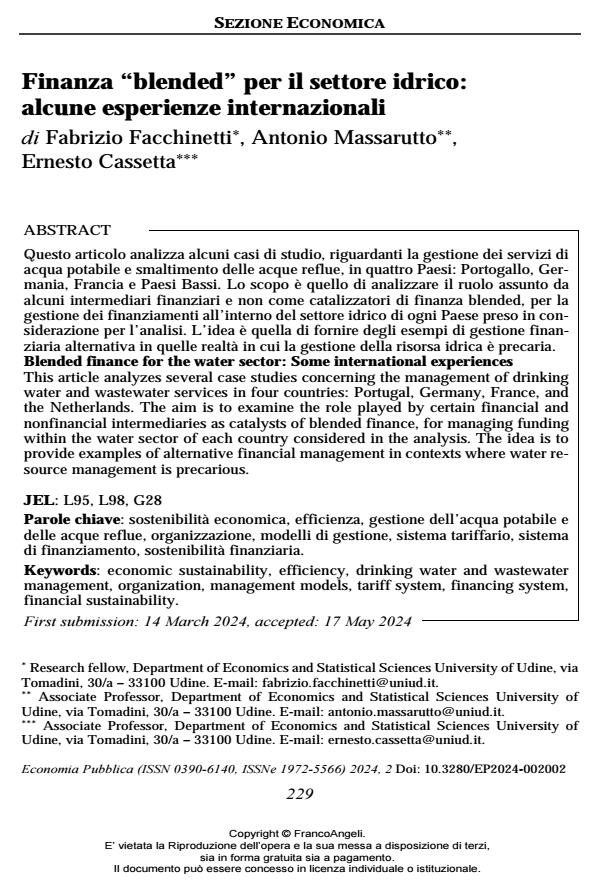Blended finance for the water sector: Some international experiences
Journal title ECONOMIA PUBBLICA
Author/s Fabrizio Facchinetti, Antonio Massarutto, Ernesto Cassetta
Publishing Year 2024 Issue 2024/2
Language Italian Pages 34 P. 229-262 File size 180 KB
DOI 10.3280/EP2024-002002
DOI is like a bar code for intellectual property: to have more infomation
click here
Below, you can see the article first page
If you want to buy this article in PDF format, you can do it, following the instructions to buy download credits

FrancoAngeli is member of Publishers International Linking Association, Inc (PILA), a not-for-profit association which run the CrossRef service enabling links to and from online scholarly content.
This article analyzes several case studies concerning the management of drinking water and wastewater services in four countries: Portugal, Germany, France, and the Netherlands. The aim is to examine the role played by certain financial and nonfinancial intermediaries as catalysts of blended finance, for managing fund-ing within the water sector of each country considered in the analysis. The idea is to provide examples of alternative financial management in contexts where wa-ter resource management is precarious.
Keywords: economic sustainability, efficiency, drinking water and wastewater management, organization, management models, tariff system, financing system, financial sustainability.
Jel codes: L95, L98, G28
Fabrizio Facchinetti, Antonio Massarutto, Ernesto Cassetta, Finanza “blended” per il settore idrico: alcune esperienze internazionali in "ECONOMIA PUBBLICA " 2/2024, pp 229-262, DOI: 10.3280/EP2024-002002